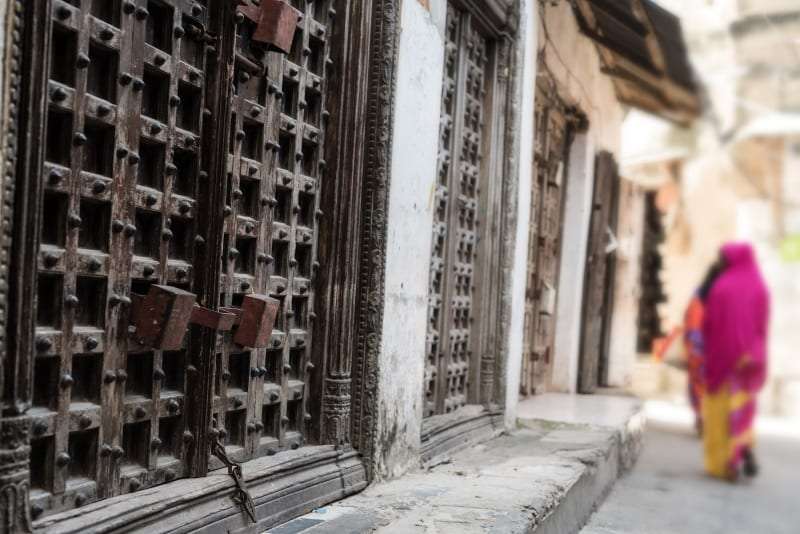Let’s go on with the discover of the beauty of Zanzibar talking about Stone Town.
Stone Town is a city of prominent historical and important of East Africa. Its architectures, mostly dating back to the XIX century, reflect the diverse influences underling the swahili culture, giving a unique mixture of arab, persian, indian and european elements.
For this reason the town was designed as a UNESCO WORLD HERITAGE SITE in 2000.
The old slave market and the anglican church.
The Anglican cathedral of Christ Church is sited on Mkunazini Road, and was built at the end of the 19th century by Edward Steere, third bishop of Zanzibar. The Cathedral was constructed in a large area at the centre of Stone Town that previously hosted the biggest slave market of Zanzibar.
This place was chosen to celebrate the end of slavery, and the altar was in the exact spot where the main whipping post of the market used to be.
Besides the church there are a monument to the slaves and a museum on the history of slavery.
The Maze of narrow streets.
The heart of Stone Town mostly consists in a maze of narrow streets limited by houses, mosques, bazaars and shops. Most streets are too narrow for cars but not bicycles and motorbikes that are the first means of transportation.
The seafront has a wide street and a long and large seawalk.
Stone Town‘s architecture has a number of distinctive features, as a result of Arab, Persian, Indian, European, and African traditions mixing together. The name “Stone Town” comes from the use of coral stone as main construction material. This gives the town a characteristic reddish warm colour. Traditional buildings have a baraza, a long stone bench along the outside walls; this is used as an elevated sidewalk if heavy rains make the streets impracticable, or otherwise as benches to sit down and spend some time to socialize. Another feature of most buildings is a large veranda made by carved wooden balustrades.



The Zanzibari houses best-known feature are the finely decorated wooden doors with carvings and bas-reliefs. Two main types of doors can be distinguished: those of Indian style have rounded tops, while those in the Omani Arab style are rectangular. Carvings are often Islamic in content (for example, many consist of verses of the Qur’an), but other symbolism is occasionally used, as Indian lotus flowers as emblems of prosperity.
The sea front
“Beit-al-Ajaib“, better known as “The House of Wonders” or “Palace of Wonders“, in located along the Stone Town seafront, and is probably the most well-known landmarks of Stone Town. It was built in 1883 and has been formerly the Sultan’s residence till the Zanzibar revolution.
It was the first building in Zanzibar to have electricity and the first building in East Africa to have a lift.
Now its interior has been dedicated to a museum on Swahili and Zanzibar culture.
The Old Fort, “Ngome Kongwe” in Swahili, adjacent to the House of Wonders, is a heavy stone fortress that was built in the 17th century by the Omanis. Also known as the Omani fort it was built to protect the city from European invasions.
It has a roughly square shape and the internal courtyard is now a cultural centre with shops, workshops, and a small arena where live dance and music shows are held daily.
Every year, for one week, the fort is used for the Zanzibar International Film Festival.

The Forodhani Gardens
There is a small park in the main sea walk of Stone Town, right in front of the Old Fort and the House of Wonders. Every evening after sunset the gardens host a popular market selling grilled seafood, swahili food and other Zanzibari recipes which attracts both tourists and locals.
The best way to finish a daily tour of this magic city that connect West with East and both of these with Africa.



For this tour the guys of Eden Zanzibar tours & safaris reveleaded to be the best choise!
FOR THIS AND OTHER EXCURSION ON THE BEAUTIFUL ZANZIBAR ISLAND:
[product_categories number=”5″ columns=”3″ hide_empty=”0″ orderby=”count” order=”asc” ids=”159″]



